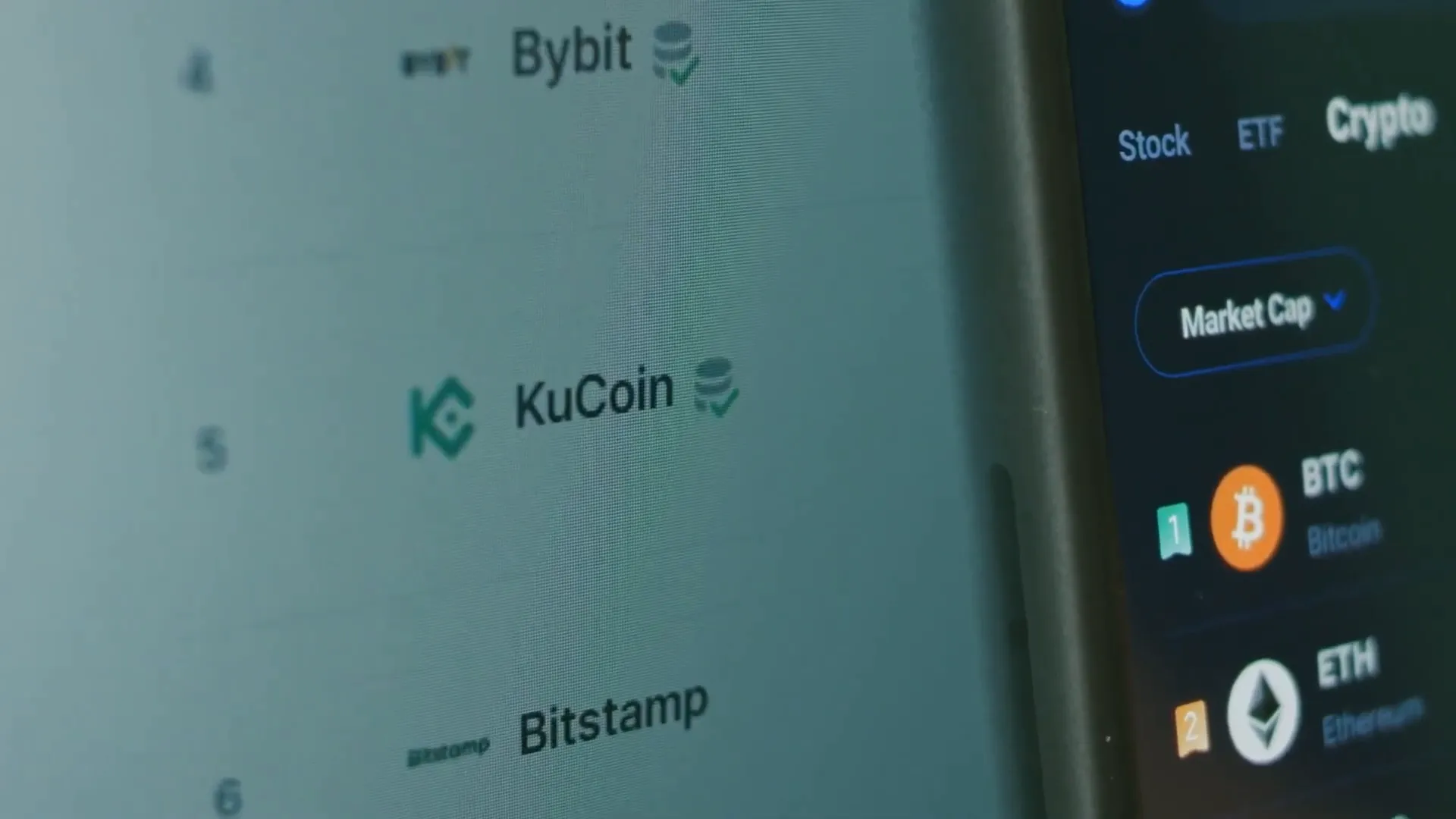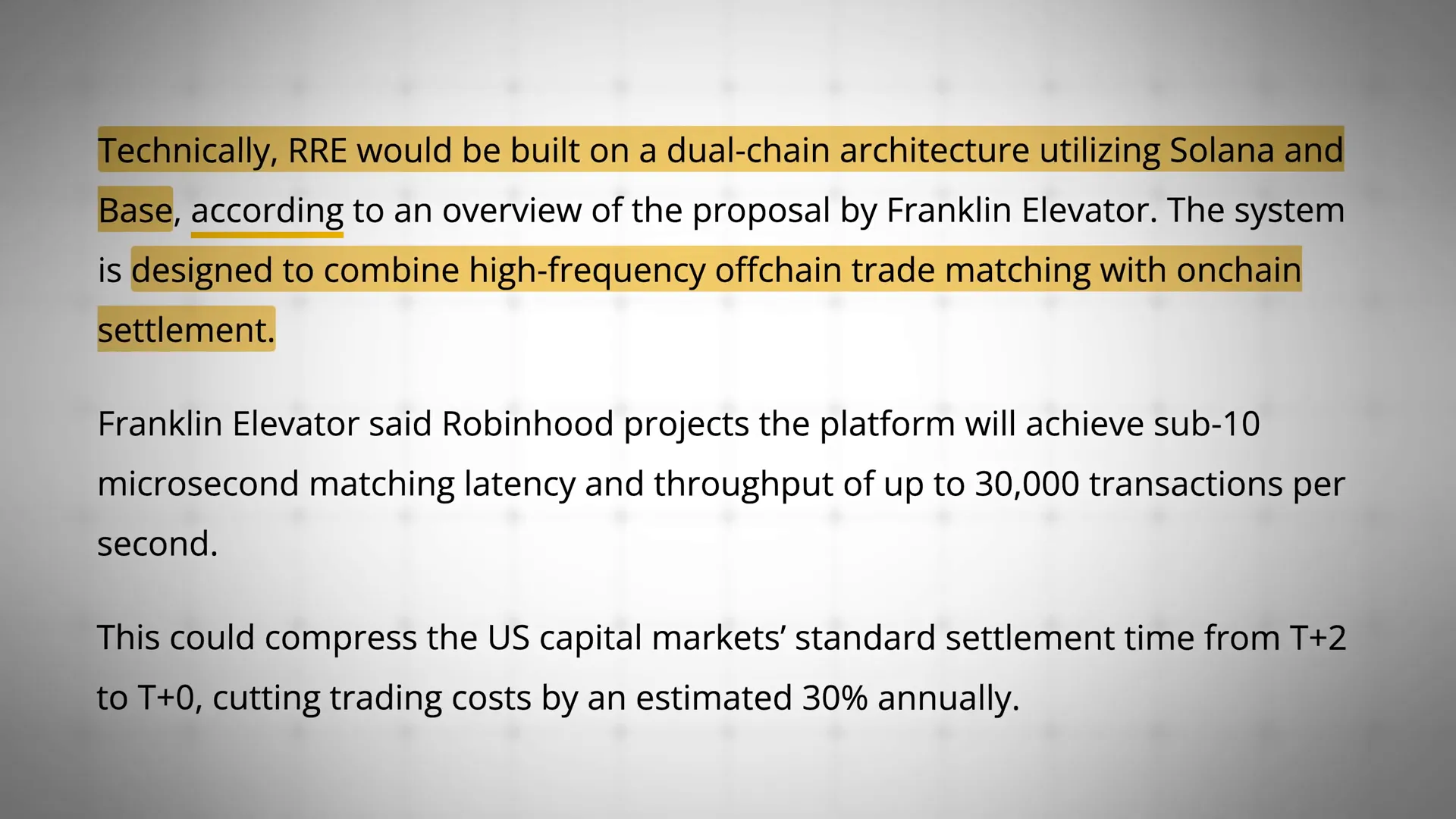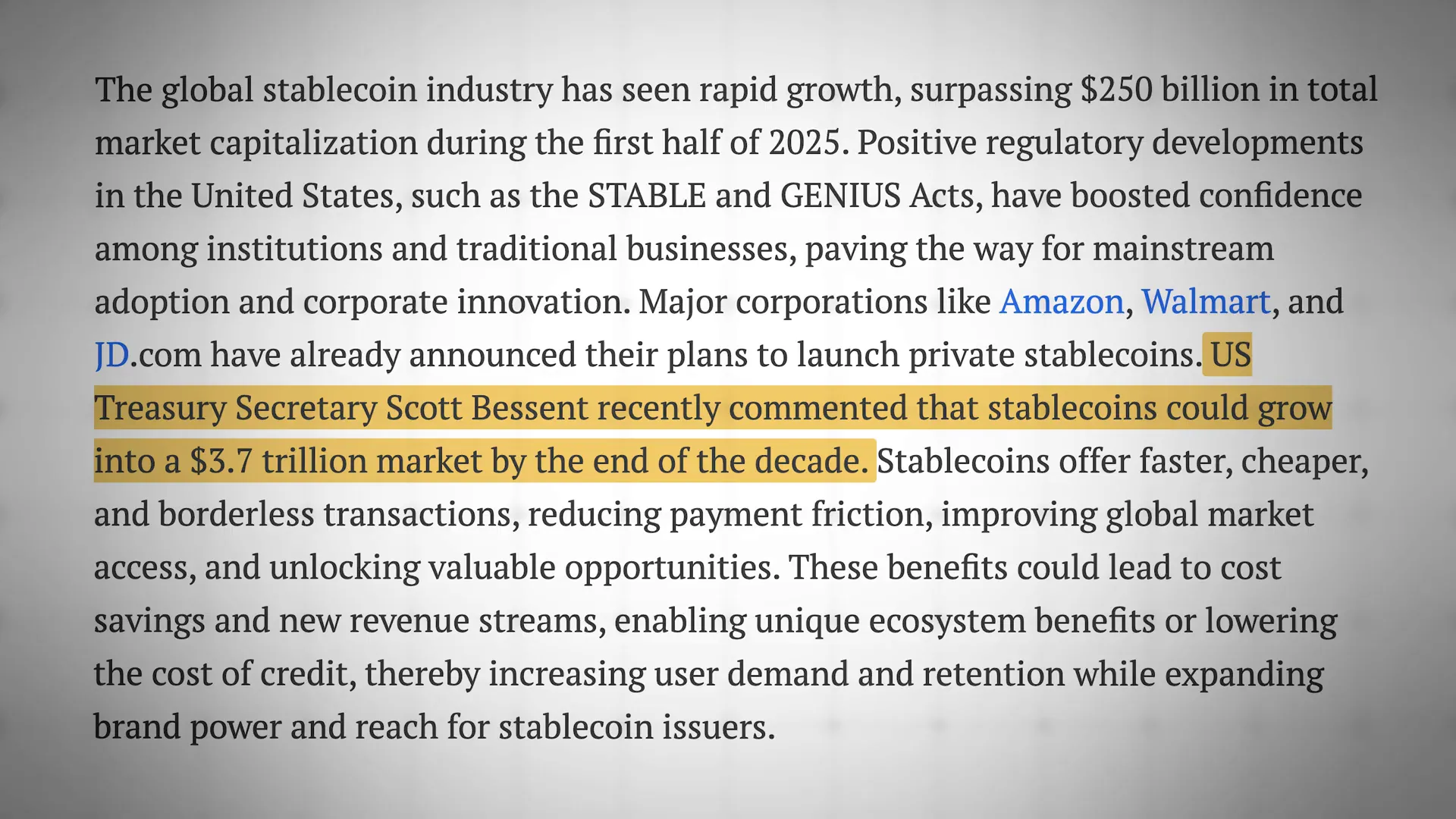
With the regulatory outlook for cryptocurrency and bitcoin turning more positive by the day, companies across many industries are diving headfirst into blockchain integrations. At the forefront of this movement are tokenized real world assets (RWAs), which are rapidly becoming central to the future of finance. As crypto regulations near approval, a wave of traditional finance (TradFi) firms and Web 2.0 companies are gearing up to enter the RWA space. This shift promises to reshape markets and open new opportunities for cryptocurrencies that support these assets.
Let’s explore the sectors making the leap into RWAs, the innovative projects driving this change, and which cryptocurrencies stand to benefit the most.

Table of Contents
- Crypto Exchanges Leading the Charge with Tokenized Stocks
- Megabanks Embrace Tokenized Real World Assets
- Web 2.0 Giants Eye Stablecoins and Tokenized Assets
- Wall Street Firms and Asset Managers Accelerate Tokenization
- Real Estate: The Fastest Growing Sector for Tokenized RWAs
- What Lies Ahead for Tokenized RWAs and Crypto
Crypto Exchanges Leading the Charge with Tokenized Stocks
When it comes to adopting tokenized assets, crypto exchanges are naturally among the earliest and most enthusiastic adopters. Coinbase, a giant in the exchange space, kicked off 2025 by exploring tokenized versions of its own “coin stock” on its Layer 2 blockchain, Base. According to Jesse Pollock, Base’s lead developer, the vision is bold: “every asset in the world will be on Base.” However, regulatory clarity remains a prerequisite for full implementation.
Coinbase has since expanded its ambitions. By mid-June, Paul Grewal, Coinbase’s chief legal officer, publicly revealed the company’s pursuit of SEC approval to offer tokenized equities—a move Grewal called a “huge priority.” This would enable Coinbase to directly compete with platforms like Robinhood, which in May filed an extensive 42-page proposal with the SEC seeking a regulatory framework for tokenized assets.
Robinhood’s proposal is particularly groundbreaking. It aims to make tokenized RWAs legally equivalent to their traditional counterparts, meaning a tokenized US Treasury bill would be recognized just like the actual Treasury bill—not as a synthetic or derivative. This regulatory shift would also replace state-level securities regulations with a federal standard, simplifying compliance. Robinhood is planning to launch a real world asset exchange (RRE) that combines high-frequency off-chain trade matching with on-chain settlement, leveraging the dual-chain architecture of Solana and Base to process a staggering 30,000 transactions per second with sub-10 microsecond latency. In layman’s terms: it’s lightning fast.
Another pioneer in this space is Kraken, often called the OG crypto exchange. In May, reports surfaced that Kraken plans to offer tokenized versions of major US stocks—Tesla, Nvidia, Apple, and more—to its non-US clients. These “xStox” tokens represent one-to-one ownership of the underlying shares and will be issued on the Solana blockchain. This move has already attracted attention, with companies like DeFi Development Corp announcing plans to tokenize their stock holdings via Kraken’s xStox.
Market analysts predict that tokenized stocks could reach a total market cap of $1 trillion in the coming years. This immense appetite for tokenized assets on crypto exchanges signals a major transformation in how traditional stocks can be traded and accessed globally.

Megabanks Embrace Tokenized Real World Assets
Crypto exchanges are just one piece of the puzzle. The banking sector, particularly megabanks, is making significant strides toward integrating tokenized RWAs. JPMorgan, a global banking behemoth, recently became the first major bank to connect its core payment system to a public blockchain. In May 2025, JPMorgan settled its first transaction on a public blockchain involving tokenized US Treasuries, executed on Ondo Finance’s OndoChain and bridged via Chainlink.
This milestone is part of JPMorgan’s digital asset platform, Connexus, which aims to bridge traditional finance (TradFi) and decentralized finance (DeFi). Shortly after, JPMorgan announced JPMD—a “deposit token” that acts somewhat like a stablecoin but represents digital commercial bank deposits. JPMD will launch on Base as a permissioned token exclusive to institutional clients. Its 24/7 availability and interest-paying design position it for significant institutional adoption.
Interestingly, on the same day JPMD was announced, the SEC confirmed a meeting with JPMorgan to discuss capital market activity on public blockchains. Tokenized collateral likely featured prominently in these talks, highlighting growing regulatory focus on this emerging space.
Bank of America is also exploring stablecoins, with CEO Brian Moynihan stating the bank’s interest in launching a stablecoin contingent on comprehensive regulation. In fact, Bank of America has reportedly held discussions with JPMorgan, Citigroup, and Wells Fargo about creating a joint stablecoin.
Citigroup has partnered with Switzerland’s SIX Digital Exchange to tokenize late-stage private shares, aiming to boost efficiency in private markets through blockchain-based securities depositories. Citigroup’s private permissioned blockchain, Citi Token Services, launched in 2023 to provide cross-border payments and automated trade finance. Early last year, Citigroup also collaborated on a proof-of-concept for tokenizing private equity funds on Avalanche’s permissioned subnet.
The involvement of these megabanks is expected to drive the tokenized RWA market past an eye-popping $30 trillion by 2030, a development that’s extremely bullish for the crypto ecosystem.
Web 2.0 Giants Eye Stablecoins and Tokenized Assets
Traditional Web 2.0 companies are gradually stepping into Web 3.0 through tokenized RWAs. Meta, for example, is reviving its stablecoin ambitions after its earlier Libra/Diem project was abandoned due to regulatory hurdles. This time, Meta is reportedly considering integration of established stablecoins like Tether’s USDT and Circle’s USDC, possibly adopting a multi-token strategy.
Other retail giants such as Walmart and Amazon are also exploring their own stablecoins to bypass traditional payment systems and save billions in banking fees. Expedia Group and various airline companies are reportedly considering similar moves. Shopify, meanwhile, is set to introduce USDC payments on Coinbase’s Base blockchain later this year, with early access already granted to select merchants.
The entry of such major Web 2.0 players into the stablecoin and tokenized asset space could unlock trillions in value by 2030. US Treasury Secretary Scott Besant estimates that the stablecoin market alone could grow to $3.7 trillion by the decade’s end.

Wall Street Firms and Asset Managers Accelerate Tokenization
Wall Street is also embracing tokenized RWAs, particularly among asset managers. Fidelity, for example, has filed with the SEC to launch a tokenized on-chain version of its Fidelity Treasury Digital Fund on Ethereum. Other investment giants like BlackRock and Franklin Templeton are following suit.
The Depository Trust and Clearing Corporation (DTCC), the world’s largest securities settlement system, announced a blockchain-based platform called Appchain for tokenized collateral management. Collateral is crucial for risk management but traditionally involves inefficient processes and delayed settlements. Tokenization enables real-time smart contract automation, drastically improving efficiency.
Galaxy Digital, newly listed on Nasdaq, revealed collaboration with the SEC to tokenize its shares, allowing these digital shares to be used in DeFi for lending and borrowing. Despite recent financial losses, Galaxy’s tokenization strategy could be a game-changer, spanning tokenized stocks, fixed income, and ETFs.
Real Estate: The Fastest Growing Sector for Tokenized RWAs
Among all sectors, real estate appears to be the quickest to embrace tokenization. Forecasts suggest tokenized real estate could reach $4 trillion by 2035—surpassing the entire current crypto market cap.
Examples abound: Ocri Capital launched a regulated real estate platform in Canada offering fractional shares of a 156-unit residential development on the Polymesh blockchain, designed specifically for RWAs. Vera Capital partnered with BlockSquare on Ethereum to launch a marketplace offering tokenized shares in over $1 billion worth of properties.
In May, Patel Real Estate Holdings launched a $100 million tokenization fund focused on institutional-grade investment opportunities, citing enhanced transparency and liquidity as key benefits.
Dubai’s government is also pioneering tokenized real estate. The Dubai Land Department (DLD) collaborated with the Central Bank of the UAE and Dubai Future Foundation to launch Pripco Mint on the XRP Ledger blockchain—the first tokenized real estate platform in the Middle East and North Africa. Fractional ownership tokens representing Dubai properties have already seen rapid uptake, with some property shares selling out in under two minutes.
In the US, Balcony, a blockchain-backed land record management firm, announced plans to tokenize deeds for 370,000 properties in New Jersey on Avalanche, totaling around $240 billion in value. This initiative is the largest blockchain deed project in US history and promises to cut processing times by over 90%, while reducing fraud and administrative errors.
What Lies Ahead for Tokenized RWAs and Crypto
To recap, crypto exchanges are rolling out tokenized stocks; megabanks are tokenizing treasuries and exploring stablecoins; Web 2.0 giants are eyeing stablecoin integration; Wall Street firms are tokenizing funds and collateral; and real estate tokenization is booming globally—all within just a few months of 2025.
The rapid progress across these diverse sectors suggests that RWAs could become one of the biggest winners in this crypto cycle. As companies realize the potential of tokenized RWAs, a positive feedback loop will form, with early adopters inspiring others to follow suit.
This trend is incredibly bullish for cryptocurrencies that support tokenized assets. Ethereum, Solana, XRP, and Avalanche stand out as key beneficiaries. Polygon is also emerging as a leading blockchain for DeFi protocols integrating RWAs. Additionally, specialized blockchains purpose-built for tokenized assets, like OndoChain and the XDC network, could see significant institutional adoption due to their tailored architecture.
Overall, the broader crypto market could experience serious capital inflows as tokenized RWAs unlock new efficiencies, liquidity, and investment opportunities. For anyone interested in the future trajectory of cryptocurrency and bitcoin, keeping an eye on the RWA narrative is essential.
If you want to dive deeper into which cryptos are best positioned to benefit from the RWA boom, there’s plenty of exciting content available to explore.
The Real Reason Big Banks Are Flocking to Crypto RWAs: What It Means for Cryptocurrency and Bitcoin. There are any The Real Reason Big Banks Are Flocking to Crypto RWAs: What It Means for Cryptocurrency and Bitcoin in here.
